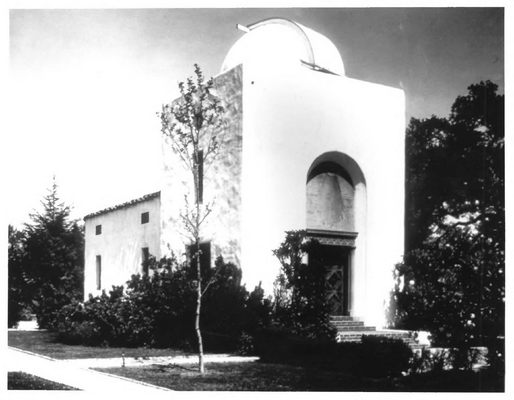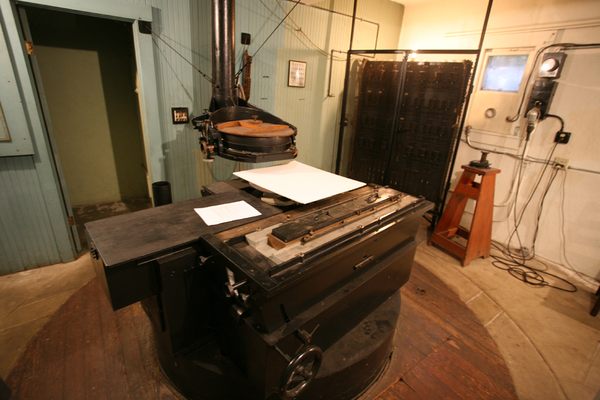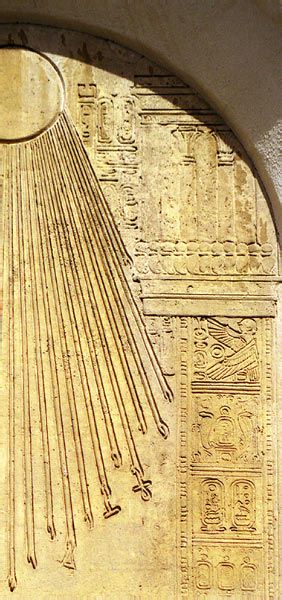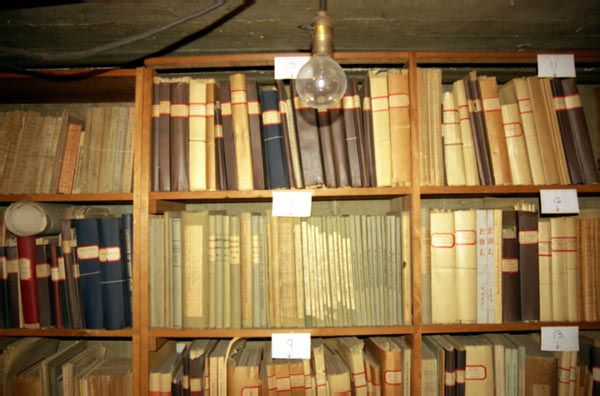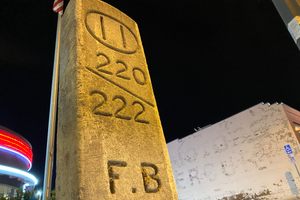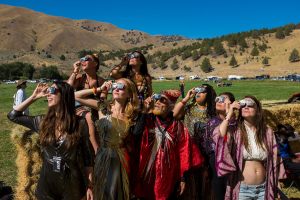About
Tucked away in a suburban Pasadena community is the former office and personal observatory of one the most prolific American astrophysicists, George Ellery Hale. With the construction of Yerkes Observatory in Wisconsin and the Mount Wilson and Palomar Observatories in California, Hale effectively built the world's largest telescope three times over.
Built in 1924, the Hale Solar Laboratory features a solar telescope enclosed within a 14-foot-diameter dome, a library originally housing many of Hale's original scientific journals and books.
The small observatory is of Spanish Colonial Revival design, complete with mission tiles and stone reliefs that Hale commissioned the sculptor Lee Lawrie to create. Hale's interest in Egyptology is demonstrated in the casting above the main entrance, which depicts the sun's rays ending in numerous hands grasping various Theban symbols. The relief is a tribute to Akhnaten, the King of Egypt and worshipper of the sun god, Aten. It is thought that this casting was made from King Tut's tomb. Bas-relief sculpture inside the library by the contemporaneous artist, Lee Laurie, similarly celebrates the sun-worshipping culture of the Egyptians. The grounds were designed by Beatrix Farrand, one of this landscape architect's few west coast gardens.
Hale's list of scientific achievements is impressive, to say the least. He co-founded both the International Astronomical Union (the organization responsible for Pluto's reclassification) and the Astrophysical Journal, the premier peer-reviewed astronomy publication in the United States. He was a trustee of the California Institute of Technology and was vocal in the formation of the National Research Council. His discovery of intense magnetic fields inside sunspots made him the first person to detect a magnetic field around an extraterrestrial body. Hale is also credited with the invention of spectroheliograph, an instrument that enables astronomers to make detailed observations of the sun's chemical structure by photographing its light at a single wavelength.
Perhaps most importantly, Hale was responsible for the planning and founding of three major observatories, each at the time considered the largest in the world. The first was at Yerkes, the second at Mt. Wilson and the third was at Mt. Palomar. For these achievements in particular, it has been said that Hale, more than anyone else, is responsible for the rise of modern astrophysics in the United States. Some have said he is the da Vinci of our times.
After stepping down as the director of the Mount Wilson Observatory Hale ordered the construction of a personal laboratory so that he could continue research in the later years of his life. The observatory's main instrument is a coelostat, which through a series of mirrors reflects the sun's light into an observation pit 76 feet below the ground. In the pit, the sun's light is dispersed into its component wavelengths before entering one of a number of solar instruments. It was at his personal laboratory that Hale developed the spectrohelioscope, a refinement of his previous invention the spectroheliograph. The new instrument made it possible to observe the hydrogen-rich prominences of the sun, filament-like plasma ejections that protrude from the solar surface.
Hale died in 1938, but important discoveries continued to be made at the laboratory under the operation of the Mount Wilson Observatory. In 1952, the father and son observing team of Harold and Horace Babcock built the first solar magnetograph at the laboratory. This instrument enabled them to finally measure the strength of the sun's magnetic field. Today, the laboratory is a National Historic Landmark and serves as a private residence.
Related Tags
Know Before You Go
The Hale Solar Laboratory is private property.
Community Contributors
Added By
Published
February 2, 2010


